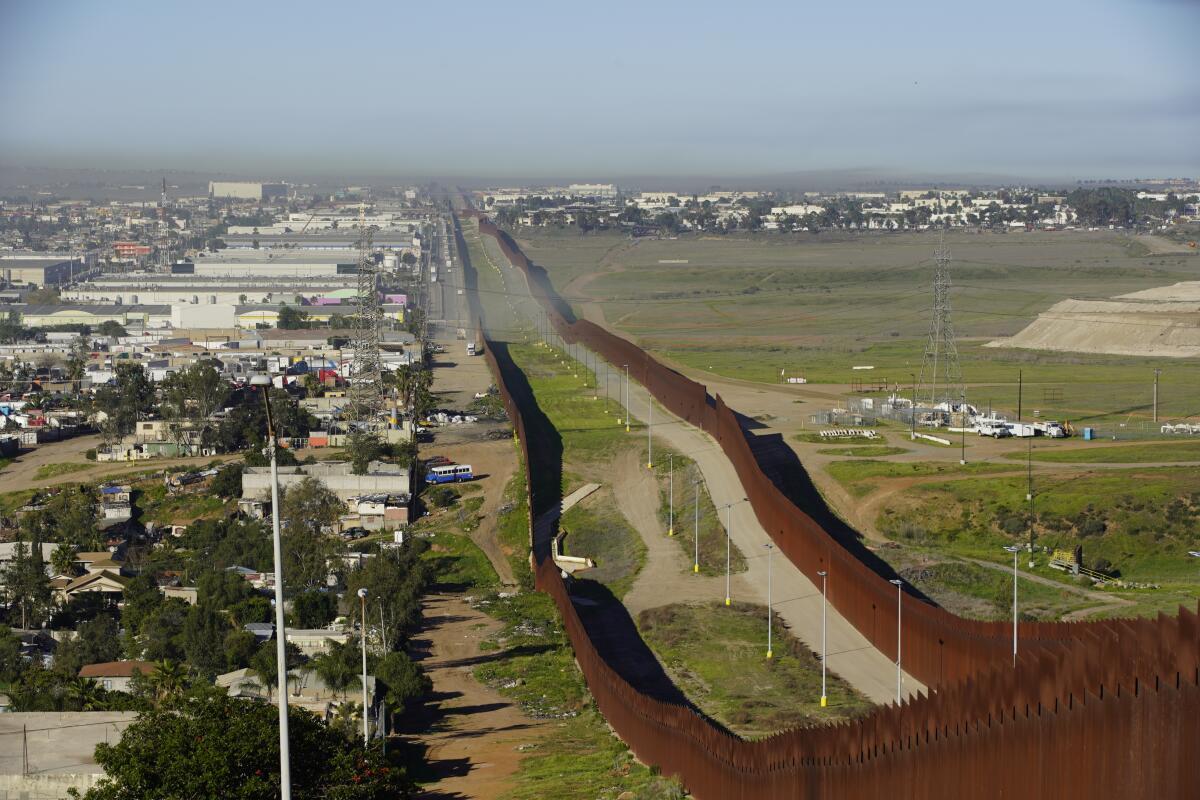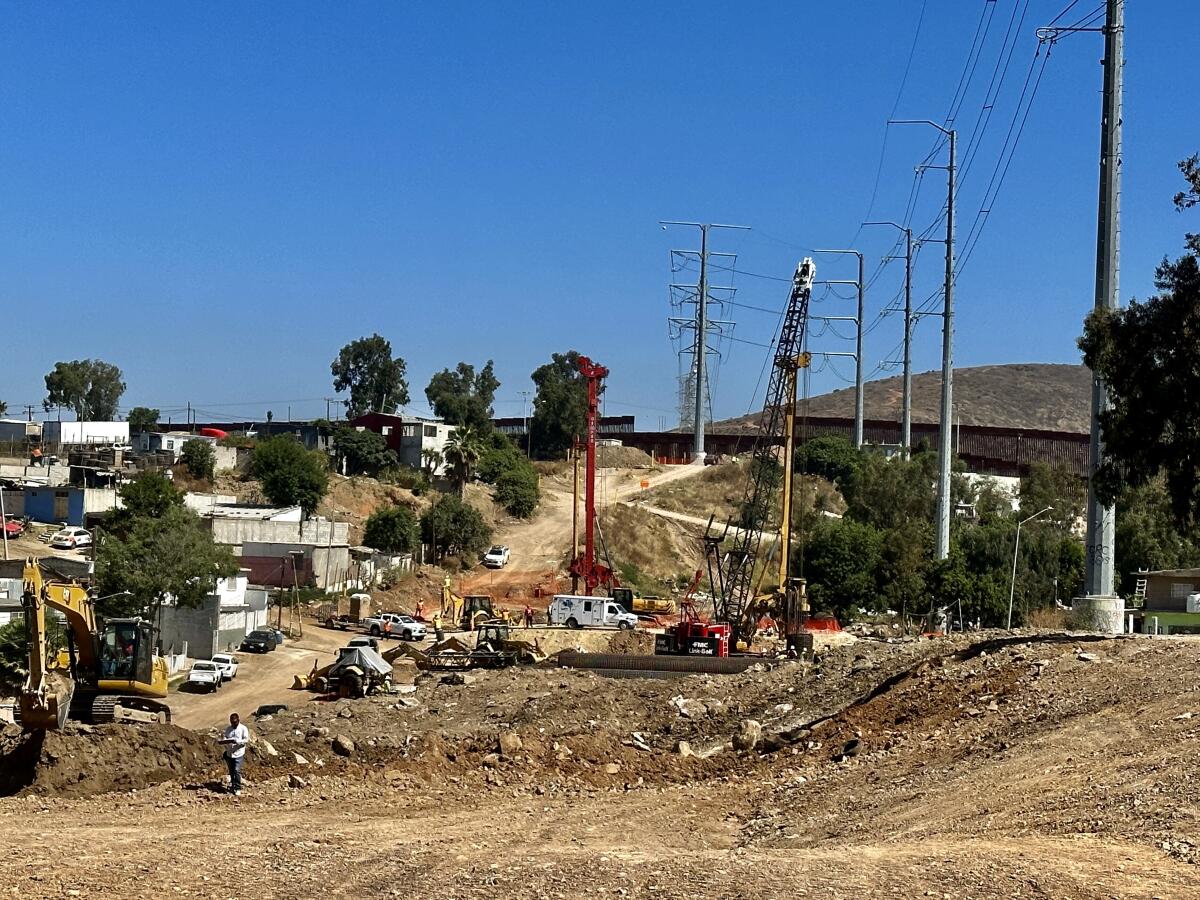Second Otay Mesa border crossing may open later than planned

- Share via
SAN DIEGO — The anticipated second Otay Mesa border crossing project, also known as Otay II, could take longer than originally announced.
It is now estimated that the newest port of entry could open in 2026 instead of late 2024. However, the project manager on the U.S. side said they were working around the clock in hopes of opening it before then.
On Friday, the San Diego Assn. of Governments, known as SANDAG, and the California Department of Transportation — agencies in charge of the Otay Mesa East project — were granted $140-million from the California Transportation Committee for the project.
This completed the funding strategy for the $1.2-billion project, said Mario Orso, project manager with Caltrans.
The new crossing will feature five vehicle lanes and five more for commercial trucks, with the option for these to be interchangeable depending on time and demand.
Unlike the other ports of entry, such as San Ysidro, a toll fee will be required when exiting the inspection booth on the U.S. side. The money collected will be divided between Mexico and the United States.
According to authorities, the toll fee will guarantee an average waiting time of 20 minutes.
The delay is due to discussions with federal agencies regarding roles and responsibilities for the maintenance and operation of the port of entry, Orso said. Once those take place, the gate design phase can begin.
“We already hired designers, we have the funds available for construction of the port of entry, and now we are waiting for the green light by Border Protection and the General Services Administration to officially begin designing the gate,” said Orso, who added that they were waiting to sign an agreement with both agencies.

The Otay Mesa construction zone from the Tijuana side on June 26.
Two years ago, California and Mexico signed another agreement to work together to deliver the project by the end of 2024.
On the U.S. side, a freeway connector has already been built, and last year, authorities celebrated the Otay Mesa East groundbreaking.
Orso said they were currently working on site preparation, architectural issues and technology implementation, including the new border wait crossing times measuring system.
Last week, Mexican officials gave a progress update in which they indicated that they would complete their part by December. The construction is overseen by the national defense secretary of Mexico.
On June 26, General Raúl Manzano, resident engineer of the Baja California customs modernization works, said that work was nearly 30% complete.
An elevated viaduct is being built in Tijuana to connect the new border crossing. The project’s investment is 5.7 millions pesos (around $330,000).
Manzano acknowledged that the initial stage of the project was slow due to the right-of-way clearance. “We don’t stop anymore since this is a 24/7 work that will be taking place until December,” he added.
Baja California’s governor, Marina del Pilar Ávila Olmeda, highlighted the progress that had taken place in the last few months and said she would like Mexico’s president, Andrés Manuel López Obrador, to inaugurate the site on Mexico’s side. López Obrador’s tenure ends at the end of 2024.
In 2020, López Obrador included the Otay Mesa project under an infrastructure plan to reactivate the economy after the pandemic.
Carlos González Gutiérrez, consul general of Mexico in San Diego, emphasized the coordination on this project between the countries.
“I think that Mexico and the United States need Otay II to get completed as soon as possible,” he said, “to first strengthen our binational trading capacity, to reduce the emission of toxic gases and, finally, to reduce crossing waiting times.”
He noted, however, that setbacks might occur.
“We understand that if, because of various reasons, it cannot be completed on the originally planned date, these things happen, and the important thing is that both governments are dedicated to finishing it as soon as possible, and finishing it well. I believe we are on the right track.”
More to Read
Sign up for Essential California
The most important California stories and recommendations in your inbox every morning.
You may occasionally receive promotional content from the Los Angeles Times.











